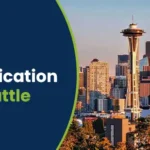Advanced Cardiovascular Life Support (ACLS) for adults is a vital set of medical procedures. This specialized care involves advanced techniques to address severe cardiac conditions such as heart attacks, arrhythmias, and cardiac arrest. Only trained healthcare professionals administer ACLS techniques, focusing on rapid responses, defibrillation, airway management, and specific medications. Read on to know about the ten most common ACLS cases an adult faces and ways to manage these issues.
Master ACLS Now
Get ACLS certified with confidence
What are the ten core ACLS cases?
There are ten classic cases in which ACLS helps adult patients with cardiovascular emergencies:
- Cardiac Arrest: Ventricular Fibrillation
- Description: VF is a life-threatening arrhythmia characterized by rapid, chaotic electrical impulses in the heart’s ventricles.
- Cause: The irregular electrical activity causes the heart to quiver, preventing effective pumping and blood circulation.
- Signs and Symptoms:
- Sudden loss of consciousness.
- Absence of pulse.
- No normal breathing.
- Treatment:
- Immediate defibrillation is the priority to restore a normal heart rhythm.
- Initiate CPR while preparing for defibrillation.
- Cardiac Arrest: Pulseless Ventricular Tachycardia
- Description: VT is a rapid, regular heart rhythm originating in the ventricles without effective pumping.
- Cause: The heart’s electrical system malfunctions, causing a fast but ineffective rhythm.
- Signs and Symptoms:
- Absence of pulse.
- Loss of consciousness.
- No normal breathing.
- Treatment:
- Immediate defibrillation is the primary intervention.
- Initiate CPR while preparing for defibrillation.
- Cardiac Arrest: Asystole
- Description: Asystole is the absence of any discernible electrical activity in the heart, resulting in a flatline ECG.
- Cause: Asystole indicates a complete cardiac standstill, and blood circulation ceases.
- Signs and Symptoms:
- Absence of pulse.
- Loss of consciousness.
- No normal breathing.
- Treatment:
- You must immediately initiate CPR.
- You may need to administer Epinephrine.
- Identifying and addressing potential reversible causes is crucial.
- Cardiac Arrest: Pulseless Electrical Activity (PEA)
- Description: PEA is a form of cardiac arrest where electrical activity is present on the ECG, but there is no effective mechanical contraction of the heart.
- Cause: The heart cannot generate a pulse and pump blood effectively despite electrical activity.
- Signs and Symptoms:
- Absence of a palpable pulse.
- Unresponsiveness.
- No effective mechanical activity in the heart.
- Treatment:
- CPR initiation is critical with the active use of the ACLS adult cardiac arrest algorithm.
- Identifying and addressing reversible causes is essential.
- Acute Coronary Syndromes
- Description: ACS represents a spectrum of ailments due to the heart muscle getting less blood.
- Cause: Typically caused by the rupture of an atherosclerotic plaque, acute coronary syndromes lead to thrombus formation and partial or complete coronary artery occlusion.
- Signs and Symptoms:
- Chest pain or discomfort.
- Shortness of breath.
- Diaphoresis (excessive sweating).
- Nausea or vomiting.
- Diagnostic Tools:
- ECG to identify changes indicative of ischemia or infarction.
- Cardiac biomarkers (troponin, CK-MB).
- Treatment:
- Immediate administration of antiplatelet agents and anticoagulants.
- Angioplasty, stenting, or coronary artery bypass grafting come next.
- Bradycardia
- Description: Bradycardia arises from an abnormally slow heart rate, typically below 60 beats per minute.
- Cause:
- Medications that work as blockers.
- Cardiac diseases, such as heart block.
- Signs and symptoms:
- Fatigue.
- Dizziness.
- Syncope (fainting).
- Shortness of breath.
- Chest discomfort.
- Evaluation:
- Electrocardiogram (ECG) to assess the heart rate and rhythm.
- External device for continuous monitoring.
- Blood tests to evaluate potential underlying causes.
- Management:
- Medicine for bradycardia.
- Temporary or permanent pacemaker insertion may be necessary.
- Tachycardia
- Description: Tachycardia is an abnormally fast heart rate, exceeding the normal resting rate, often defined as over 100 beats per minute.
- Cause:
- Electrical impulses originating above the ventricles (supraventricular) or within the ventricles.
- Increased sympathetic stimulation.
- Medications, such as stimulants.
- Heart conditions, like atrial fibrillation.
- Signs and Symptoms:
- Rapid heartbeat.
- Palpitations.
- Dizziness.
- Shortness of breath.
- Chest discomfort.
- Evaluation:
- Electrocardiogram (ECG) that accesses the heart rate and rhythm.
- External device for continuous monitoring.
- Stress testing to evaluate heart function under exertion.
- Management:
- Vagal maneuvers (e.g., Valsalva maneuver).
- Medications, such as beta-blockers or antiarrhythmics.
- Post-Cardiac Arrest Care
- Description: Post-cardiac arrest care focuses on managing patients after the return of spontaneous circulation (ROSC), aiming to optimize neurological and cardiac recovery.
- Key Components:
- Neurological Monitoring:
- Continuous neurologic assessment.
- Utilization of tools like the Glasgow Coma Scale (GCS).
- Cardiovascular Support:
- Monitoring for arrhythmias.
- Targeted temperature management (TTM) to prevent neurological damage.
- Respiratory Management:
- Mechanical ventilation with oxygenation support.
- Monitoring for signs of respiratory distress or failure.
- Neurological Monitoring:
- Acute Ischemic Stroke
- Description: This case addresses the advanced cardiac life support (ACLS) protocols applied when a patient presents with symptoms of sudden disruption of blood flow to the brain.
- Key Components:
- Rapid Assessment:
- Quick evaluation of neurological signs and symptoms.
- Utilization of tools.
- Time-Critical Interventions:
- Administration of thrombolytic therapy.
- Consideration of endovascular therapy.
- Rapid Assessment:
- Acute Dyspnea or Hypotension
- Description: This ACLS case involves scenarios where a patient experiences acute dyspnea (difficulty breathing) or hypotension (low blood pressure).
- Key Components:
- Initial Assessment:
- Rapid evaluation of airway, breathing, and circulation.
- Differentiation between respiratory and cardiac causes of dyspnea.
- Cardiac Monitoring:
- Continuous ECG monitoring to identify arrhythmias or ischemic changes.
- Recognition of shockable rhythms (e.g., ventricular fibrillation) and initiation of defibrillation as needed.
- Initial Assessment:
Conclusion
ACLS for adults is the need of the hour and can help save lives. With heart-related ailments on the rise, more healthcare workers must invest in an ACLS certification. By following the right ACLS steps for adults, you can read early signs of cardiac diseases and suggest preventive measures.







